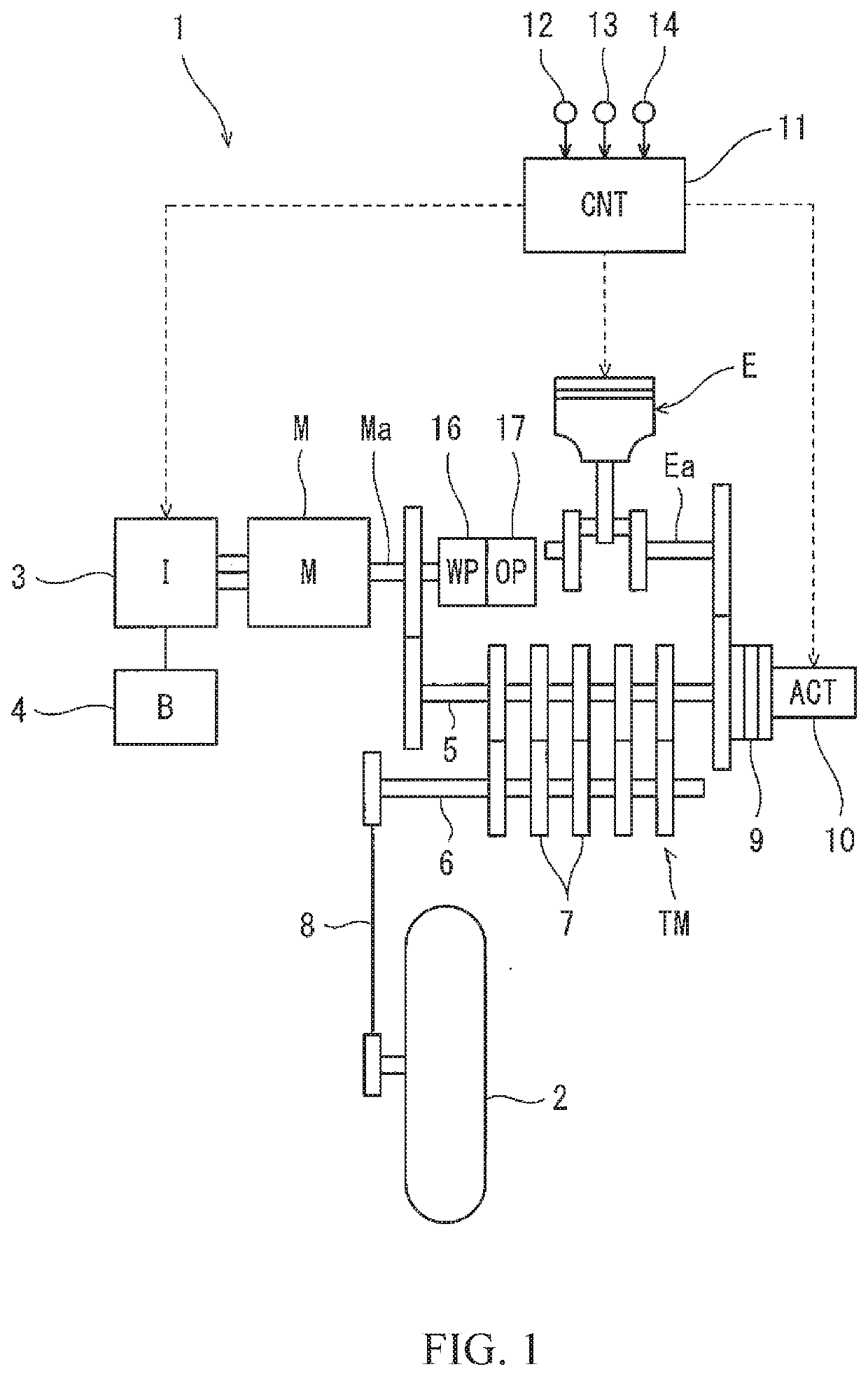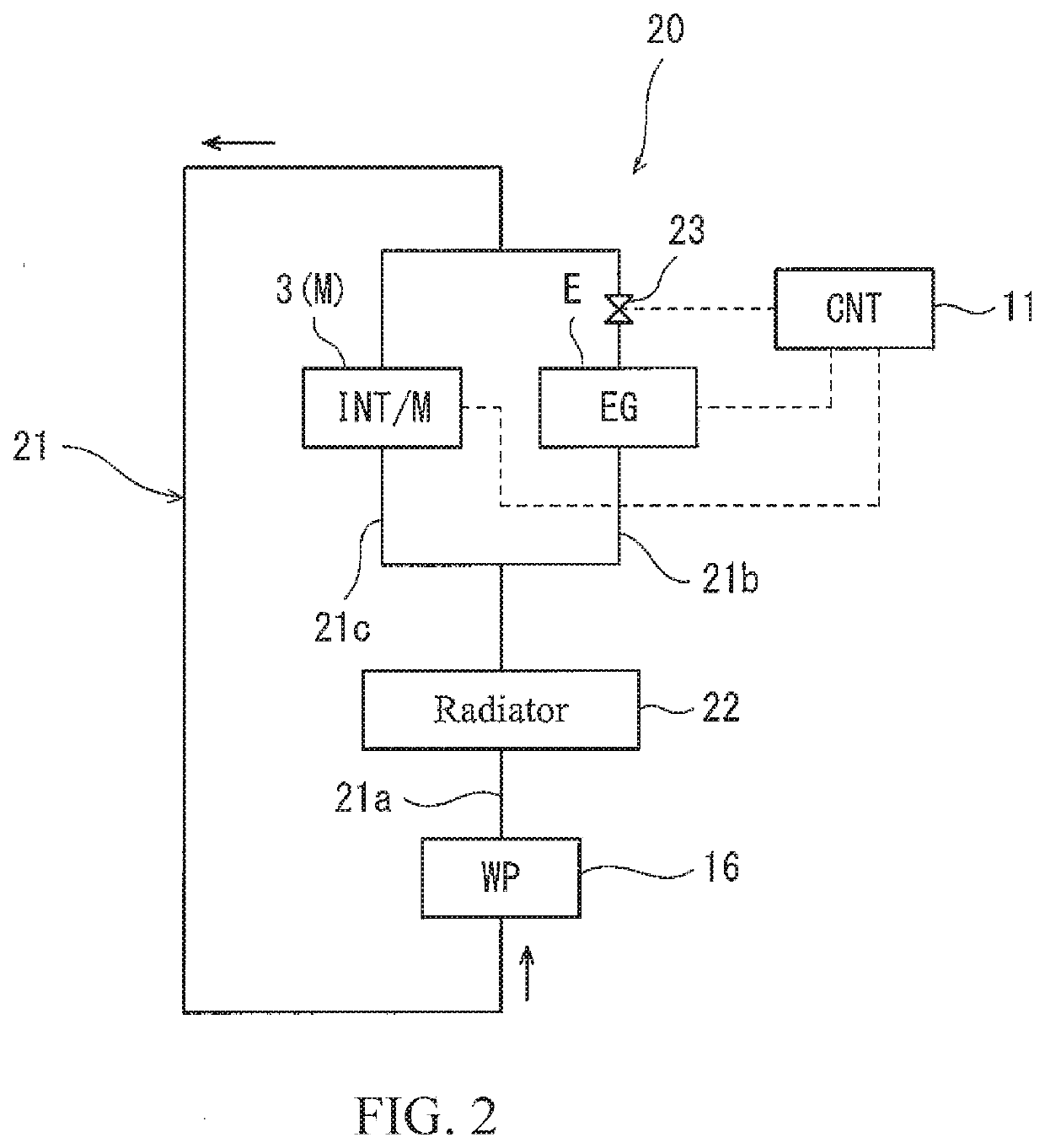Parallel hybrid vehicle
- Summary
- Abstract
- Description
- Claims
- Application Information
AI Technical Summary
Benefits of technology
Problems solved by technology
Method used
Image
Examples
first embodiment
[0028]FIG. 1 is a configuration diagram of a parallel hybrid vehicle 1 according to a first embodiment. As shown in FIG. 1, the vehicle 1 is, for example, a motorcycle. The vehicle 1 includes an unillustrated driven wheel (front wheel) and a drive wheel 2 (rear wheel). The vehicle 1 includes an engine E and an electric motor M. The engine E and electric motor M are disposed between the front wheel (driven wheel) and rear wheel (drive wheel 2).
[0029]The engine E is an internal combustion engine. The engine E serves as a drive source for travel which drives the drive wheel 2. The engine E serves also as an electricity generator drive source. The engine E is, for example, a four-stroke engine.
[0030]The electric motor M generates power from electricity supplied from a battery 4 via an inverter 3, thus serving as a drive source for travel which drives the drive wheel 2. The electric motor M generates electricity from power transmitted from an input shaft 5 of a transmission TM, thus serv...
second embodiment
[0047]FIG. 5 is a configuration diagram of a parallel hybrid vehicle 101 according to a second embodiment. In the parallel hybrid vehicle 101 of the second embodiment, as seen from FIG. 5, the water pump 16 is disposed in a different way. In the parallel hybrid vehicle 101, the drive shaft of the water pump 16 is disposed coaxially with, and coupled to, the input shaft 5 of the transmission TM. The drive shaft of the oil pump 17 is disposed coaxially with, and coupled to, the rotation shaft Ma of the electric motor M. With this configuration, as in the first embodiment, the water pump 16 and oil pump 17 can be driven irrespective of the travel mode and without the need for providing an auxiliary motor dedicated for driving of the water pump 16 and oil pump 17. The other elements are the same as those of the first embodiment described above. The same elements are denoted by the same reference signs and will not be described again.
third embodiment
[0048]FIG. 6 is a configuration diagram of a parallel hybrid vehicle 201 according to a third embodiment. In the parallel hybrid vehicle 201 of the third embodiment, as shown in FIG. 6, the drive shaft of the water pump 16 is coupled to the crankshaft Ea of the engine E via a first one-way clutch 261. The first one-way clutch 261 permits transmission of power from the crankshaft Ea of the engine E to the water pump 16, and prohibits transmission of power from the water pump 16 to the crankshaft Ea of the engine E.
[0049]The drive shaft of the water pump 16 is coupled to the rotation shaft Ma of the electric motor M via a second one-way clutch 262. The second one-way clutch 262 permits transmission of power from the rotation shaft Ma of the electric motor M to the water pump 16, and prohibits transmission of power from the water pump 16 to the rotation shaft Ma of the electric motor M. The drive shaft of the oil pump 17 is coupled to the drive shaft of the water pump 16. For example, ...
PUM
 Login to View More
Login to View More Abstract
Description
Claims
Application Information
 Login to View More
Login to View More - R&D
- Intellectual Property
- Life Sciences
- Materials
- Tech Scout
- Unparalleled Data Quality
- Higher Quality Content
- 60% Fewer Hallucinations
Browse by: Latest US Patents, China's latest patents, Technical Efficacy Thesaurus, Application Domain, Technology Topic, Popular Technical Reports.
© 2025 PatSnap. All rights reserved.Legal|Privacy policy|Modern Slavery Act Transparency Statement|Sitemap|About US| Contact US: help@patsnap.com



